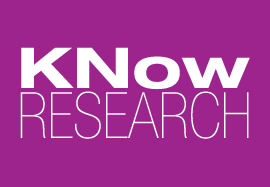Case Study: Understanding Behavior Patterns to Reframe Offerings
KNow Research makes it a priority to give back to the community at large on an annual basis. Each year, we choose a non-profit organization in need of assistance with gathering insights but without the budget to accommodate a full project and contributes in the form of a pro bono project.
Our annual pro bono work this year focused on optimal use of the emergency room on behalf of John Muir Health.
We conducted a series of key stakeholder interviews, followed by patient interviews and intercepts to paint the full picture of why lower acuity patients choose to visit the ER over other care choices, what patient groups are the most frequent users of the ER in these circumstances and what some options might be to help them find more appropriate care options.
It was an illuminating experience; especially putting our Qualitative Intercept Interviews (QIIs) to the test by intercepting patients in the ER!
Katy Carew, our Research Manager, conducted the emergency room intercepts and one-on-one interviews with healthcare professionals. To understand the causes and implication of this situation for both staff and patients, we conducted research in 3 stages:
- Key Informant Interviews (KII’s)
- Pre-recruited patient interviews
- Intercept interviews in the ED (emergency department)
The trickiest component of this 3-phase approach were the intercept interviews in an ED. From a legal perspective it was important to give the patient the opportunity to choose to participate, also we were not allowed to speak to the patient ourselves until they had opted in by speaking with a member of staff. However the benefits of conducting them were key to our understanding of the problem and potential solutions. While the staff on the front lines could hypothesize the motives for these patients using the ED, we were actually able to speak to them real time and dive into their decision-making process around choosing a point of care (including their perceived benefits and barriers to care).
This research resulted in concrete and valuable learnings for the health system that have allowed them to begin tailoring specific strategies to help patients access the most appropriate form of care. We tapped into our empathic compassion resources and really listened to all points of view in and around the hospital and worked with the client team to discuss what solutions are currently working and what might be considered in the future.
Read more about the case study in our Collaborata blog post and via IIeX Health.
If you’d like to read about our 2019 Pro Bono project recipient, check out Sonya’s post: A 3-stage Approach to Defining Unique Benefits for Leeza’s Care Connection

